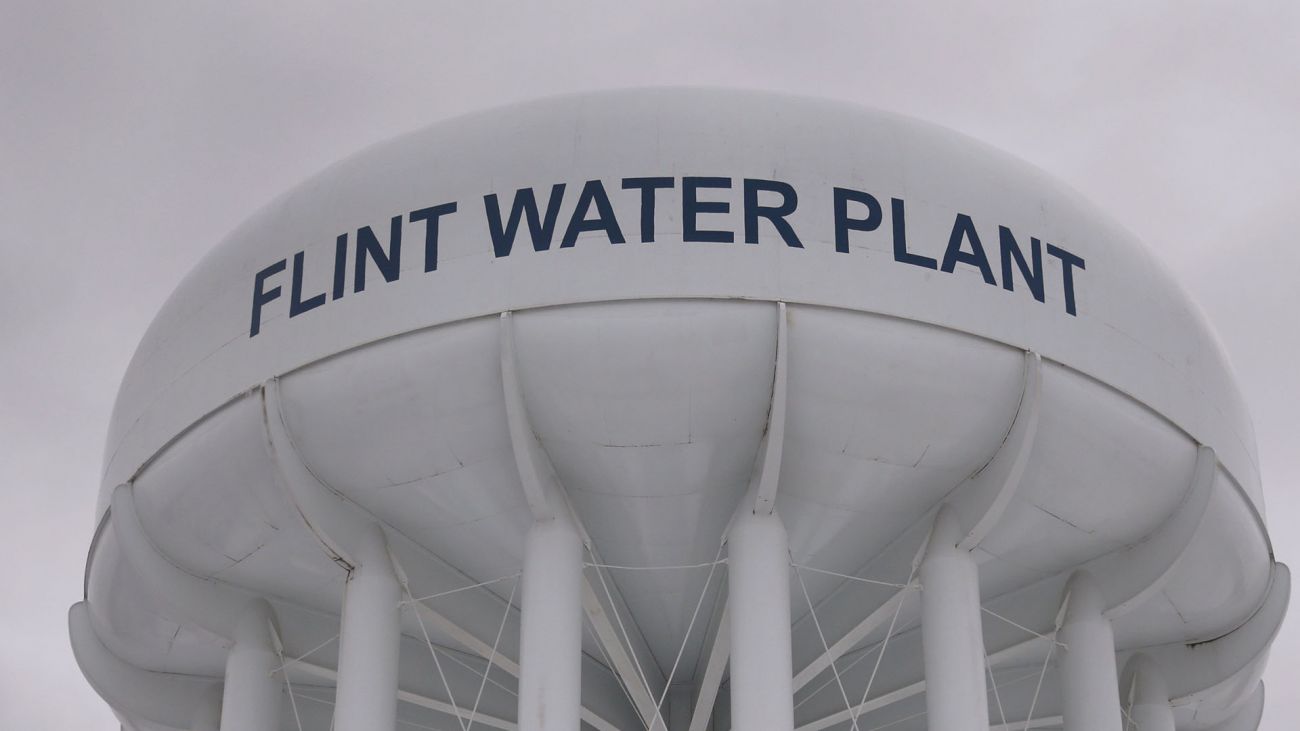Gov. Whitmer unveils $500M spending strategy for Michigan water

Michigan Gov. Gretchen Whitmer on Thursday announced a $500 million clean water spending strategy to address concerns from lead pipe replacement and chemical contamination in drinking water to sewer overflows and leaky septic systems.
Whitmer said in a statement that the strategy, dubbed MI Clean Water, “marks a significant investment after decades of underinvestment in Michigan's infrastructure.”
“Since the first day I took office, I have made an unwavering commitment to ensuring that Michiganders have access to clean and affordable water,” Whitmer said. “The MI Clean Water Plan marks a significant step toward that goal.”
Much of the money comes from existing sources and will be spent over several years: $290 million in bonding authority from the 2002 voter-approved Great Lakes Water Quality Bond, $105 million in general fund dollars the Legislature approved in 2019, $102.1 million in federal revolving loan fund money for lead service line replacement in low-income communities, and $2.9 million in grants for local stormwater and wastewater systems.
Whitmer needs legislative approval to spend the remaining $290 million in the Great Lakes Water Quality Bond. She called upon legislators to approve the spending, saying that “Michiganders are tired of waiting for action.”
Gideon D'Assandro, a spokesperson for House Speaker Lee Chatfield, R-Levering, said Chatfield “is still reviewing today’s proposal."
The announcement of the funding strategy estimated the money would support more than 7,500 jobs, citing an estimate that every $1 million invested in water infrastructure creates 15 jobs.
Highlights include:
- $207.1 million for drinking water quality initiatives, including $102 million for lead service line replacement, $37.5 million to help communities implement rules designed to reduce lead and copper in drinking water, and $25 million in grants to help local communities address PFAS contamination.
- $293 million for wastewater initiatives, including grants to help stop sewer overflows, fix failing septic systems, and improve stormwater management.
The announcement included notes of praise from Detroit Mayor Mike Duggan; state Rep. Kevin Hertel, D-St. Clair Shores; Sen. Rick Outman, R-Six Lakes, and Dr. Mona Hanna-Attisha, the MSU College of Human Medicine pediatrician and professor who helped expose the Flint water crisis.
Duggan said the strategy would help Detroit, “where we have the oldest infrastructure in the state,” replace water mains and lead service lines, and expand affordability programs for low-income residents.
City officials have estimated the cost of replacing Detroit’s lead lines alone could approach $700 million.
Advocates and experts called Whitmer’s plan a good start, but said much more money is needed to meet Michigan’s water infrastructure needs.
A 2016 report from Lansing-based Public Sector Consultants estimated Michigan needs to spend as much as $1 billion annually on drinking water alone through 2030.
The estimate didn’t include investments needed to help Flint recover from its lead-tainted drinking water crisis, and it was developed before Michigan’s PFAS contamination crisis was on the public radar.
Doug Van Essen, environmental attorney for Plainfield Township, where PFAS contamination from Rockford-basd shoemaker Wolverine World Wide contaminated area groundwater, said the $25 million in PFAS grant funding is “a substantial commitment and a good start,” but more is needed.
In northern Kent County alone, the cost to hook residents with contaminated wells up to a municipal water system and install filtration to remove PFAS will ultimately cost about $80 million, he said. Money from a settlement with Wolverine World Wide will cover much of the bill.
“I don’t think it’s the state’s responsibility to do all of this work,” Van Essen added. “There are polluters that need to pay, and be held accountable.”
Maggie Pallone, a vice president at Public Sector Consultants and former deputy director for the state environment department, lauded Whitmer’s strategy for allocating funding to long-unmet clean water needs.
“We know that somewhere between 10 [percent] and 25 percent of the septic systems in the state are failing,” Pallone said. “It’s a long-term need that we haven’t been able to find funding for.”
But Pallone noted that much of the money in the plan comes from revolving loan funds that are of limited use to financially-strapped communities that may struggle to pay off loans.
“My hope is that this is the start of a conversation around water availability and how communities can afford to upkeep their water infrastructure,” Pallone said. “And that needs to be a broader conversation that the Legislature is involved with.”
Whitmer noted the strategy will not meet all of Michigan’s needs, and pledged to work with the Legislature on “creative solutions to address our water infrastructure backlog.”
Bridge reporter Jonathan Oosting contributed to this report.
Michigan Environment Watch
Michigan Environment Watch examines how public policy, industry, and other factors interact with the state’s trove of natural resources.
- See full coverage
- Subscribe
- Share tips and questions with Bridge environment reporter Kelly House
Michigan Environment Watch is made possible by generous financial support from:
Our generous Environment Watch underwriters encourage Bridge Michigan readers to also support civic journalism by becoming Bridge members. Please consider joining today.
See what new members are saying about why they donated to Bridge Michigan:
- “In order for this information to be accurate and unbiased it must be underwritten by its readers, not by special interests.” - Larry S.
- “Not many other media sources report on the topics Bridge does.” - Susan B.
- “Your journalism is outstanding and rare these days.” - Mark S.
If you want to ensure the future of nonpartisan, nonprofit Michigan journalism, please become a member today. You, too, will be asked why you donated and maybe we'll feature your quote next time!






